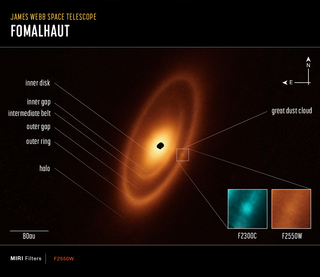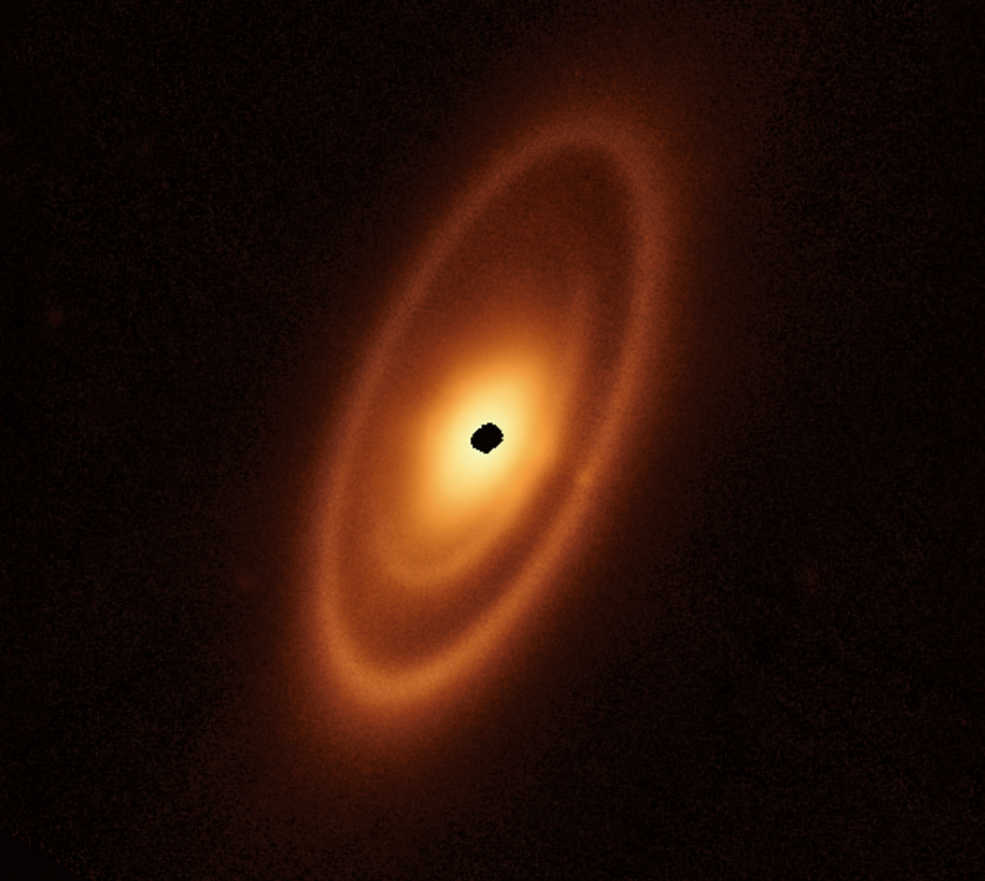Astronomers using NASA's James Webb Space Telescope have imaged the warm dust surrounding Fomalhaut, a nearby young star, to study the first asteroid belt seen outside our solar system in infrared light. Three nested belts were discovered, extending out to 14 billion miles from the star, which is 150 times the distance between Earth and the Sun. This discovery is exciting because the dusty structures are much more complex than those in our solar system, with the scale of the outermost belt being twice the scale of our Kuiper Belt. The inner belts were revealed by Webb for the first time. The belts most likely are carved by the gravitational forces produced by unseen planets, and as Webb images more systems, we will learn about the configurations of their planets. In addition, the structure around Fomalhaut is intriguing because any time an astronomer sees a gap and rings in a disk, they say, “There could be an embedded planet shaping the rings!"
The quick look:
- Astronomers used NASA’s James Webb Space Telescope to study the first asteroid belt ever seen outside of our solar system in infrared light.
- The warm dust surrounding Fomalhaut, a nearby young star, was imaged to reveal the nested belts that are much more complex than those in our solar system.
- Three nested belts were discovered, which extend out to 14 billion miles from the star.
- The scale of the outermost belt is roughly twice the scale of our Kuiper Belt.
- The inner belts were revealed by Webb for the first time.
- The belts most likely are carved by the gravitational forces produced by unseen planets, which is why Webb imaging more systems will allow us to learn about the configurations of their planets.
- The structure around Fomalhaut is intriguing because any time an astronomer sees a gap and rings in a disk, they say, “There could be an embedded planet shaping the rings!”

Details:
-
The image shows a dusty debris disk: The image captured by Webb's Mid-Infrared Instrument (MIRI) is of a disk-like structure surrounding the young star Fomalhaut. This structure is made up of dusty debris that is leftover from the formation of the star and its planetary system.
-
The disk has three nested belts: The image shows that the debris disk has three distinct rings or belts, each of which is located at different distances from the star. The innermost belt is closest to the star, while the outermost belt is the farthest.
-
The belts extend up to 14 billion miles (23 billion kilometers): The three belts seen in the image extend up to a distance of 14 billion miles (23 billion kilometers) from the star. To put this in perspective, this is more than 3 times the distance between the Sun and Neptune in our own solar system.
-
Webb revealed inner belts never seen before: One of the most significant findings of the image is the discovery of the inner belts that were never seen before. Webb's advanced capabilities and sensitivity allowed it to detect these previously unknown features in the debris disk.
-
Labels indicate individual features: The left side of the image is labeled to indicate the individual features of the debris disk. This allows scientists to identify and study specific parts of the disk in detail.
-
Dust cloud highlighted on the right: On the right side of the image, a particular dust cloud is highlighted, and pullouts show it in two different infrared wavelengths (23 and 25.5 microns). This helps scientists study the properties of the dust and better understand the physical processes that are shaping the debris disk.
Discover More
Most Viewed
Christmas is a season of joy, love, and traditions. And what better way to get into the holiday spirit than through timeless carols? These musical gems have been bringing people together for generations. Here’s our ranked list of the Top 10 Christmas Caro…
Read More
















